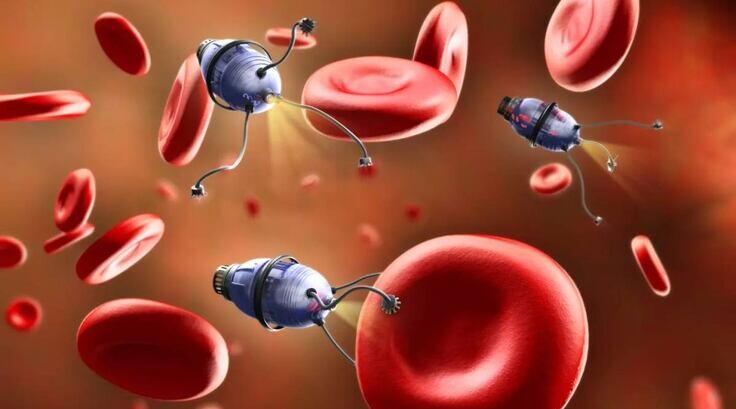Calls for Ukraine
Calls for Europe
Calls for USA

Scientists say a study has shown that nanorobots can deliver medications to precisely defined locations.
Doctors have hailed a medical breakthrough that will allow tiny robots to be injected into the human body to perform complex tasks.
A team of scientists has developed magnetic nanorobots consisting of drugs that influence blood clotting, encapsulated in a shell that can melt at precise temperatures.
The technology could “open new horizons in medicine,” the scientists said.
In a study led by the University of Edinburgh’s School of Engineering, scientists have shown that the technology could be used to treat bleeding in the brain caused by aneurysms, which kill around 500,000 people worldwide each year.
They injected several hundred billion tiny robots, each about one-twentieth the size of a red blood cell, into an artery and then remotely guided them to the site of the aneurysm using magnets and medical imaging.
Once the hive of tiny robots was in the right place, the researchers used magnets to bring them together and heat them to the melting point of their coating, thus releasing the drug at a point where it could prevent or stop bleeding into the brain.
An aneurysm is a blood-filled bulge in a cerebral artery that can rupture and cause fatal bleeding or lead to stroke and disability.
Dr. Qi Zhou of the University of Edinburgh’s School of Engineering, who was one of the study principals, said: “Nanorobots have the potential to break new ground in medicine, allowing us to perform surgery with less risk than traditional treatments and to target drugs to hard-to-reach parts of the body with precision.”
“Our study is an important step toward bringing these technologies closer to treating critical medical conditions in clinical practice.”
According to the researchers, the study showed that nanorobots are able to deliver drugs to precise locations without the risk of them leaking into the bloodstream, which, according to the scientists, is a key criterion for the safety and effectiveness of the technology.
The authors said the nanorobots could reduce the need for implants in the treatment of brain aneurysms, such as spirals or stents (mesh tubes).
In turn, they said, this would reduce the risk of the implants being rejected by the body and reduce reliance on anti-clotting drugs, which can cause bleeding and stomach problems.
They added that inserting an implant into an aneurysm can require several hours of laborious surgery, as it is necessary to go through the complex network of small blood vessels in the brain.
The same team has developed nanorobots to remove blood clots, which they say have also shown potential in treating strokes.
The study, published in the Journal of Nanoscience and Nanotechnology Small, was carried out by a team from the UK and China.
Please rate the work of MedTour
